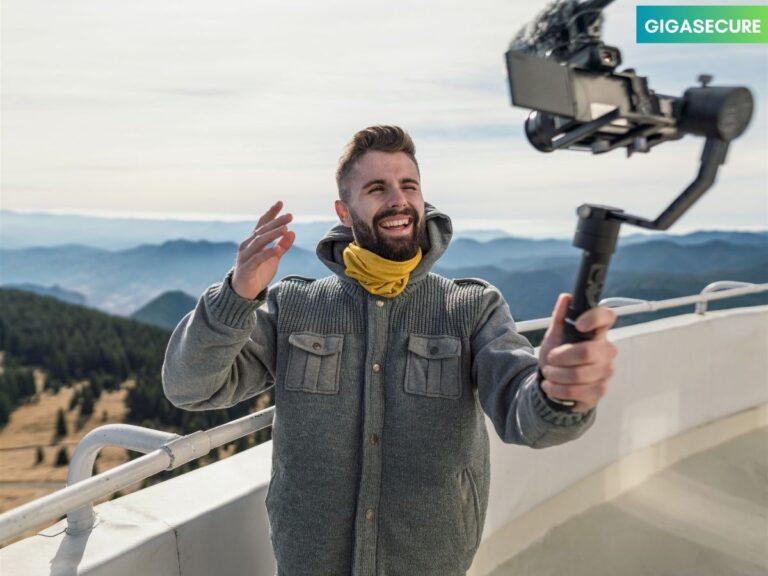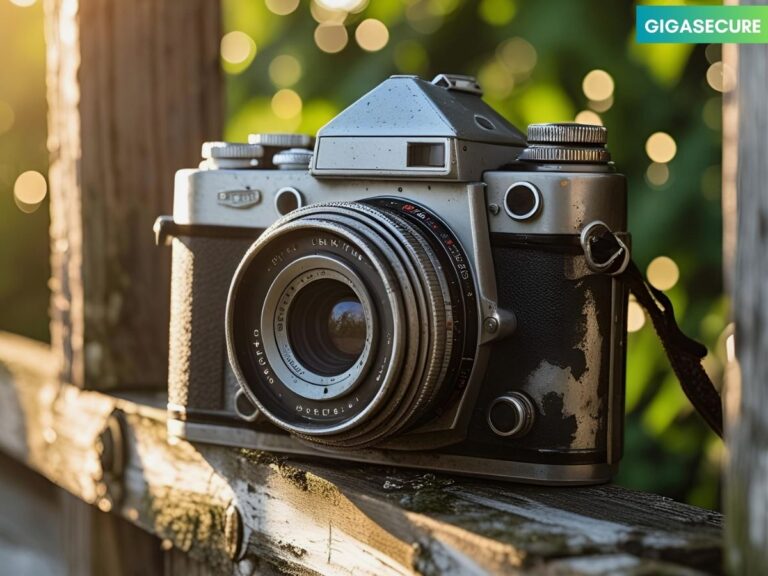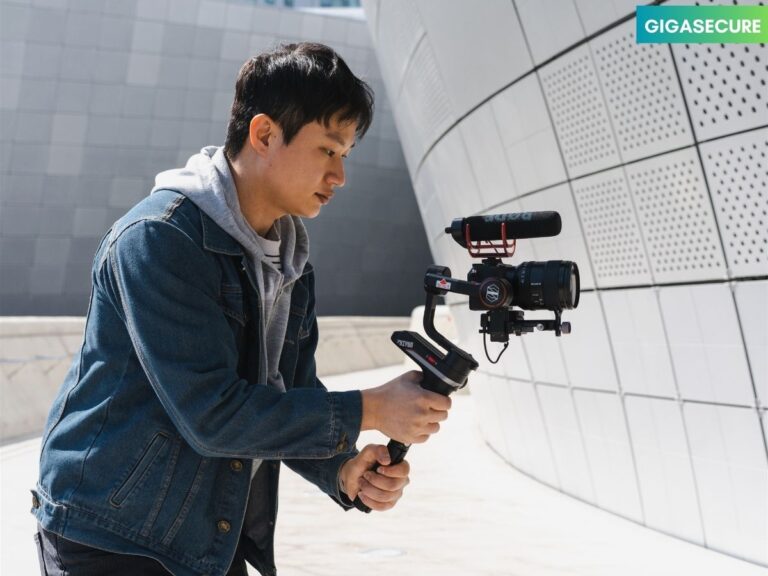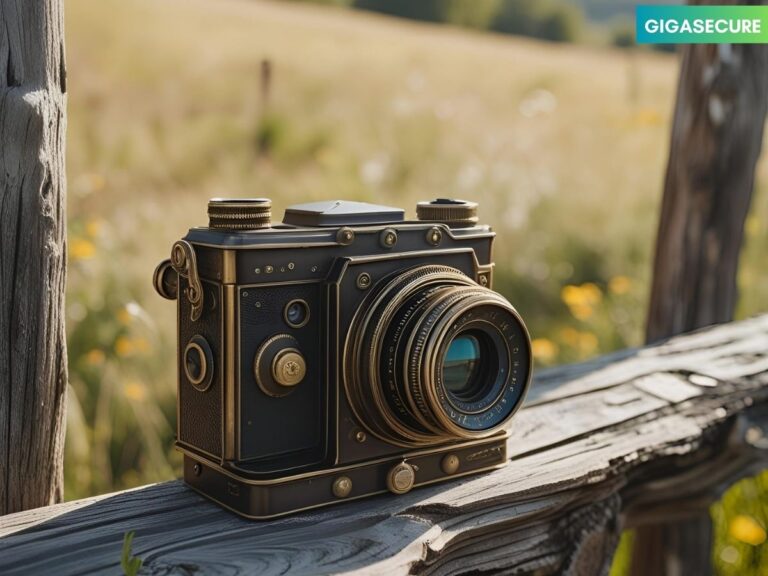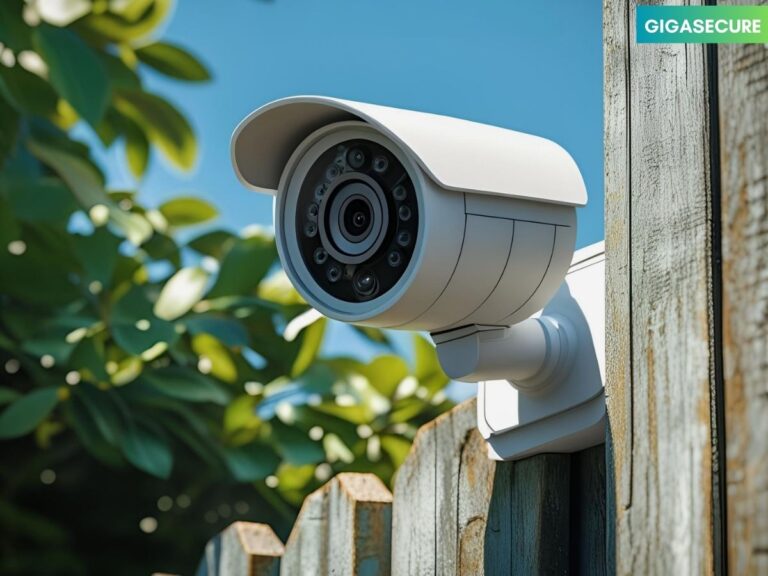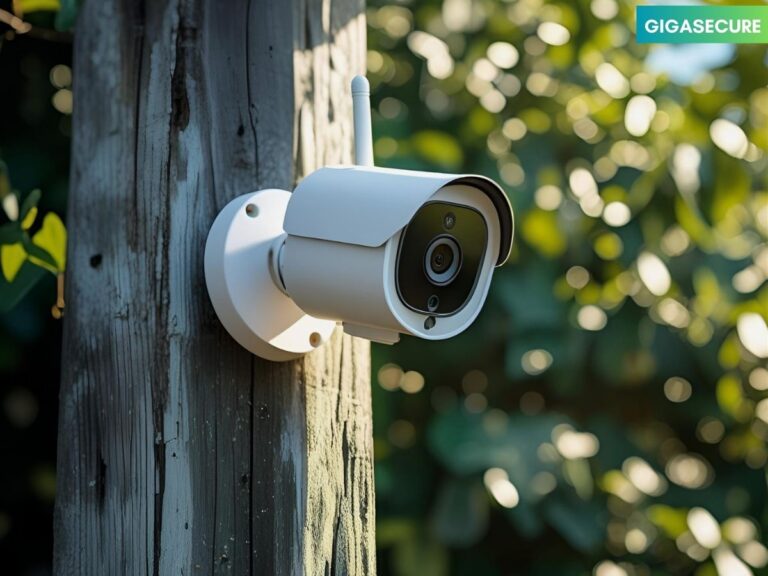How to Choose the Right Outdoor Camera for Your Home?
Keeping your home safe is very important. One good way to do this is by using an outdoor camera. But, with so many choices, picking the right one can be hard.
I know how important it is to choose wisely when picking an outdoor security camera. In this article, I’ll help you make the right choice. I’ll share tips for home outdoor camera setup and care.
Key Takeaways
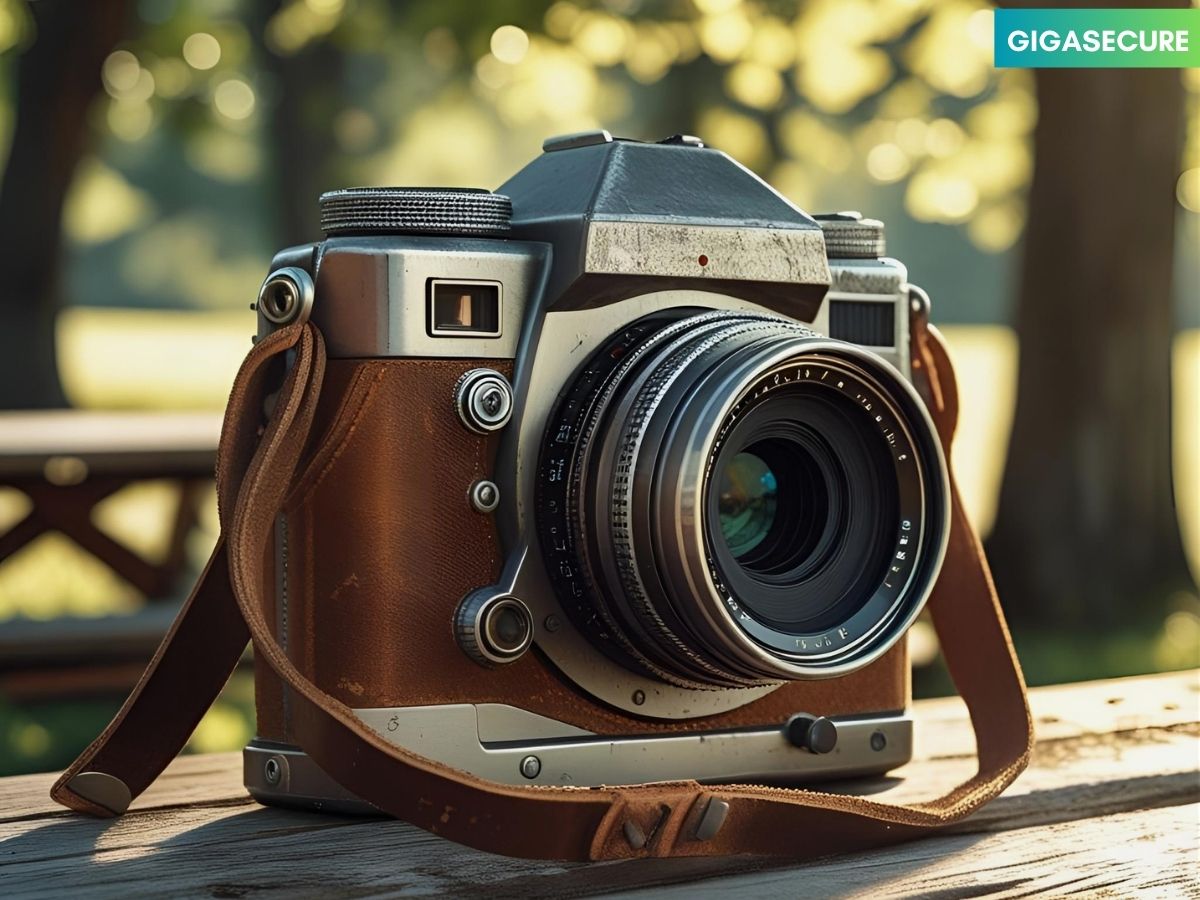
Understanding Your Home Security Needs
Before you start looking at outdoor cameras, it’s key to know what your home needs for security. Take a close look at your property to find weak spots that could be targets for intruders.

Assessing Your Property’s Vulnerable Areas
Begin by walking around your home to spot possible entry points like doors and windows. Look for spots that are hard to see, like where trees or other things block your view. Also, think about places with valuable stuff, like garages or sheds.

| Vulnerable Area | Potential Threat | Camera Placement |
|---|---|---|
| Front Door | Intruders | Above the door or nearby |
| Backyard | Intruders, trespassers | Corner of the yard or near a fence |
| Garage | Theft, vandalism | Above the garage door or inside |
Determining Your Security Goals
It’s also important to figure out what you want to achieve with your security setup. Do you want to scare off intruders or keep an eye on your property from afar?
Maybe you want to catch license plates or see who’s there. Knowing what you need helps you pick the right camera.
Key considerations include: how much detail you need, the area you want to see, and if you need it to work at night or detect movement.
Types of Outdoor Security Cameras
Choosing the right outdoor security camera is key to keeping your home safe. There are many options, each with its own strengths and weaknesses. Knowing what each type offers is important for effective security.
Bullet Cameras
Bullet cameras are sleek and weather-resistant, perfect for the outdoors. They are affordable and can scare off intruders. Their small size makes them easy to place anywhere on your property.
Dome Cameras
Dome cameras have a wide view and are tough against vandalism. They are great for outdoor security. You can install them in many spots, like corners and ceilings, for a more hidden look.
PTZ (Pan-Tilt-Zoom) Cameras
PTZ cameras let you see more with their zoom and pan features. They’re good for big areas or where you need to see details. They’re perfect for zooming in on people or objects.
Floodlight Cameras
Floodlight cameras add light and security to dark spots around your home. They have LED lights that turn on when they sense movement. This adds an extra layer of safety and scares off intruders.
| Camera Type | Key Features | Best For |
|---|---|---|
| Bullet Cameras | Weather-resistant, visible deterrent | Outdoor use, visible locations |
| Dome Cameras | Vandal-resistant, wide field of view | Discreet installations, wide coverage |
| PTZ Cameras | Pan-tilt-zoom functionality | Large properties, detailed surveillance |
| Floodlight Cameras | Illumination, motion-triggered lights | Dark areas, additional security |

Essential Features to Consider When Choosing an Outdoor Camera
When picking an outdoor camera, it’s key to look at its main features. These features help ensure your camera offers the security and functionality you need.
Resolution and Image Quality
The camera’s resolution and image quality are critical. A higher resolution, like 1080p or 4K, means clearer images. This makes it easier to spot people or objects.
Choose cameras with top-notch sensors and lenses for the best images.
Key considerations for resolution and image quality include:
- Resolution (e.g., 720p, 1080p, 4K)
- Sensor quality
- Lens quality
Night Vision Capabilities
Night vision is essential for outdoor cameras. It lets them work in the dark. There are two main types: infrared (IR) and starlight technology. IR uses LEDs, while starlight boosts low-light sensitivity.
“The best outdoor cameras offer night vision capabilities that allow for clear footage even in complete darkness.”
Field of View and Coverage Area
The field of view (FOV) shows how much area the camera can watch. A wider FOV means you need fewer cameras. Make sure the camera’s angle and range fit your needs.
| Field of View | Coverage Area | Typical Use |
|---|---|---|
| Wide (90°+) | Large areas, such as backyards or parking lots | Monitoring expansive outdoor spaces |
| Narrow (30°-90°) | Specific areas, like doors or windows | Focusing on particular points of interest |
Motion Detection and Alerts
Motion detection is a great feature. It alerts you to any security issues. Look for cameras with adjustable zones and sensitivity to avoid false alerts.

By focusing on these key features, you can pick an outdoor camera that boosts your home’s security.
How to Choose the Right Outdoor Camera for Your Home
To pick the best outdoor camera for your home, you need to match it to your security needs. When choosing, think about the area you want to watch, how much detail you need, and your budget.
Matching Camera Types to Specific Needs
Outdoor cameras come in different types for different needs. For example, a PTZ (Pan-Tilt-Zoom) camera is great for watching a big area like a backyard.
It can zoom in on specific spots. But, if you just want to see a small area, like a doorway, a bullet camera or dome camera might be better.

Think about how much detail you need. For clear images, even at night, look for high-resolution cameras with good night vision. If you’re watching a busy area, cameras with advanced motion detection are helpful.
Balancing Features with Budget
It’s tempting to get the most advanced features, but you should also think about your budget. First, decide what’s most important to you.
If you need to see clearly at night, choose a camera with good night vision. For big areas, consider a camera that can zoom or see a wide field.
By matching the camera to your needs and balancing features with your budget, you can find a camera that boosts your home’s security without spending too much.
Weather Resistance and Durability Factors
When choosing an outdoor camera, think about its weather resistance and durability. These cameras face many environmental challenges. So, picking one that can handle the elements is key.
IP Ratings Explained
The IP (Ingress Protection) rating is important for outdoor camera durability. It shows how well the camera can resist solid objects and water.
The rating has two numbers. The first number is for solid protection, and the second is for liquid protection.
For example, an IP67 camera is dustproof and can handle being underwater up to 1 meter deep.
- IP65: Protected against dust and low-pressure jets of water from any direction.
- IP66: Protected against dust and powerful jets of water.
- IP67: Protected against dust and immersion in water up to 1 meter deep.
Temperature Tolerance and Extreme Weather Considerations
Outdoor cameras need to work in a wide range of temperatures. Some can handle extreme cold or heat, while others can’t. Make sure the camera’s temperature range fits your local climate.
Also, look for cameras with heaters or anti-condensation features. These can help them perform better in harsh weather.

Power Options for Outdoor Cameras
Outdoor cameras need a reliable power source to work well. There are many options to choose from. The power source affects the camera’s performance, installation, and cost.
Wired vs. Battery-Powered Cameras
Wired cameras get power directly from a source, giving a steady flow of energy. This is good for places where wiring is easy and can save money over time. But, it might need a pro to install, which can raise the initial cost.
Battery-powered cameras are flexible and easy to set up. They can be moved whenever needed. But, they need batteries replaced or recharged often, which can be a hassle and increase costs.
| Camera Type | Installation | Power Supply | Cost |
|---|---|---|---|
| Wired | Professional | Continuous | Higher upfront, lower long-term |
| Battery-Powered | DIY | Intermittent | Lower upfront, higher long-term |
Solar-Powered Alternatives
Solar-powered cameras are a green and possibly cheaper choice for outdoor security. They use sunlight to power them, cutting down on battery needs or wiring. But, they work best in sunny spots.
Solar-powered cameras are perfect for places that get lots of sunlight all day. They’re great for those wanting to lower their carbon footprint and use less traditional power.

Connectivity and Smart Home Integration
When looking at outdoor cameras, it’s key to know how they connect and work with smart homes.
Wi-Fi, Ethernet, and Cellular Options
Outdoor cameras can link up through Wi-Fi, Ethernet, or cell networks. Wi-Fi is easy to use but might not be safe if not set up right.
Ethernet offers a strong and safe connection, perfect for important cameras. Cellular is great for areas far from internet or where Wi-Fi is weak.
| Connection Type | Advantages | Disadvantages |
|---|---|---|
| Wi-Fi | Easy to install, widely supported | Potential security risks, signal interference |
| Ethernet | Stable, secure, reliable | Requires wiring, limited flexibility |
| Cellular | Useful for remote locations, no internet required | Ongoing cellular data costs, possible signal problems |
Compatibility with Smart Home Ecosystems
It’s important to make sure your outdoor camera works with your smart home. Big names like Amazon Alexa, Google Assistant, and Apple HomeKit are popular.

Voice Assistant Integration
Voice assistants let you control your camera with just your voice. This makes your smart home better. For example, you can ask to see the camera’s view on a device or get alerts for motion.
Thinking about these points helps you pick a camera that’s good for security and makes your smart home better.
Storage Solutions for Your Footage
Outdoor camera storage is key for home security. You need to pick the right storage to keep your footage safe and easy to find.
Local Storage vs. Cloud Storage
You can choose between local and cloud storage. Local storage uses devices like SD cards or NAS. It’s secure and keeps your recordings private.
Cloud storage lets you store footage online. It’s easy to access from anywhere with internet.
- Local storage advantages:
- Enhanced privacy and security
- No recurring subscription costs
- Fast access to footage
- Cloud storage advantages:
- Remote access to footage
- Automatic backups
- Scalable storage capacity
Subscription Costs and Considerations
Cloud storage is great but it might cost money. The price depends on the service and how much storage you need. Think about these costs and what cloud storage offers.
Important things to consider are:
- The total storage capacity needed for your footage
- The frequency of footage access and review
- The level of security and encryption provided by the cloud storage service

By looking at your storage needs, you can pick the best option for your outdoor camera footage.
Installation Tips and Placement Strategies
Installing outdoor cameras right is key for home security. A well-placed camera can scare off intruders and help prove a break-in.
Optimal Camera Positioning
Getting your camera’s position right is important. Think about the view, light, and any blind spots. Place the camera high enough to be safe but clear to see what’s happening.
DIY vs. Professional Installation
DIY can save money, but pros do it right. If heights or wiring scare you, get a pro. They know how to place cameras best.

Legal Considerations and Neighbor Privacy
Follow local laws on camera use. Also, respect your neighbors’ privacy. Don’t point your camera at their place to avoid fights.
Wiring and Power Source Planning
Think about your camera’s wiring and power. Decide if you need wires or a wireless setup. Solar cameras are great for outside because they don’t need wires.
Follow these tips to make your outdoor camera work well for your home’s safety.
Privacy and Security Considerations
Outdoor cameras are now key for home security. But, they need strong security to protect your data. They can be hacked, so keeping them safe is very important.
Protecting Your Camera from Hacking
To keep your camera safe from hackers, use strong security steps. Make sure your camera’s password is complex and update its software often. Many cameras have features like two-factor authentication to boost security.
Data Privacy and Footage Access
Keeping your camera’s data private is a must. You should decide who can see your footage. Choose cameras with secure data storage, like encrypted local or cloud storage. Always check who can see your camera’s feed and change permissions when needed.

FAQ Of How to Choose the Right Outdoor Camera for Your Home
What are the key factors to consider when choosing an outdoor security camera?
When picking an outdoor security camera, think about the camera type, resolution, and night vision. Also, consider the field of view, motion detection, and weather resistance. Don’t forget about power options and connectivity. Knowing your home’s security needs and identifying vulnerable spots is key.
What is the difference between wired and battery-powered outdoor cameras?
Wired cameras have a steady connection and don’t need battery changes. But, they might need a pro for installation. Battery cameras are flexible and easy to set up. Yet, they need battery swaps regularly.
How do I ensure my outdoor camera is weather-resistant?
Look at the camera’s IP rating to see how well it protects against solid objects and water. Choose cameras with a high IP rating, like IP65 or higher, for better weather protection.
Can I integrate my outdoor camera with my smart home system?
Yes, many outdoor cameras work with popular smart home systems. This lets you control them with voice assistants like Amazon Alexa or Google Assistant.
What are my storage options for outdoor camera footage?
You can store footage on SD cards, NAS devices, or cloud services. Cloud services often require a subscription. Think about storage space, access, and security when picking a method.
How do I protect my outdoor camera from hacking?
To keep your camera safe, use strong passwords, update firmware regularly, and choose secure connection options. These steps help prevent hacking.
What are the best practices for installing an outdoor camera?
When installing a camera, pick the best spot and decide if you’ll do it yourself or hire a pro. Also, remember to respect your neighbors’ privacy and follow local laws.
Can I use a solar-powered outdoor camera?
Yes, solar cameras are a green choice. But, they work best in sunny areas. Check sunlight hours, battery backup, and power needs before choosing a solar camera.
Conclusion
Choosing the right outdoor camera is vital for your home’s security. Think about the camera type, its features, how it’s powered, and how it connects. This helps you pick the best one for your needs.
Good outdoor cameras help keep intruders away and make your home safer. This article showed how to pick the right camera for your home. Knowing what you need and where your home is most vulnerable is key.
Using the tips from this article can make your outdoor camera work better. This means you’ll feel safer at home.
Whether you’re updating your security or starting fresh, choosing wisely is important for a secure home.

